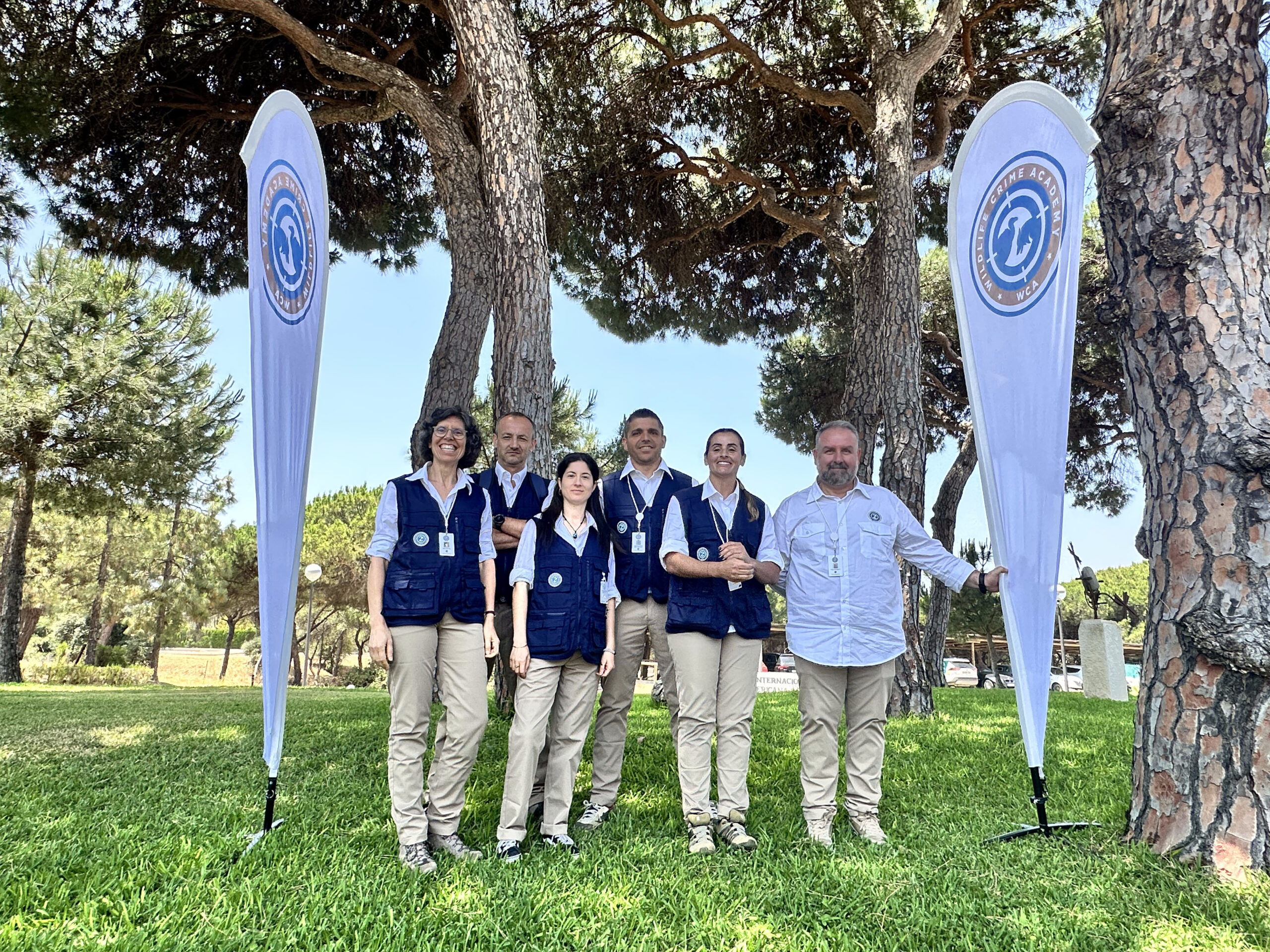Cinereous Vultures (Aegypius monachus) normally start breeding in early February, and this year was no different. For almost a month, our LIFE Aegypius Return partners have been monitoring the movements of the breeding pairs in Herdade da Contenda, southeast Portugal, and the results are very promising.
Monitoring Cinereous Vultures in Southern Portugal
Herdade da Contenda is the only breeding place for the Cinereous Vultures in the entire Alentejo Region and is home to the second largest nucleus known in Portugal, with ten breeding pairs. In 2022, though, only three chicks fledged, partly due to the collapse of natural nests during the breeding season. Earlier this year, our partners rebuilt some of the nesting platforms to boost reproductive success, which will be an ongoing activity as part of the project.
During February, our partners at Liga para a Protecção da Natureza (LPN) and rangers from ICNF spent several hours at Herdade da Contenda monitoring the previously known nests and exploring potential new breeding sites. Six of the previous nests were occupied and four new natural nests were detected, all built on top of large pine trees, possibly by the other four known pairs that bred in 2022. One of the rebuilt nesting platforms is being used, which reinforces the importance of this conservation measure to consolidate the breeding population.

During the monitoring work, other rare and threatened species were also observed, such as the Griffon Vulture (Gyps fulvus), Golden Eagle (Aquila chrysaetos), Iberian Imperial Eagle (Aquila adalberti) and Black Stork (Ciconia nigra). In Northeast Portugal, our partner Palombar also started monitoring the area of the International Douro and confirmed that the two known pairs are breeding!
The breeding season ahead
In southern Portugal, Cinereous Vultures build their huge nests on the top of pine trees, which are the most abundant species in the region or use artificial nesting platforms. Their nests are normally reused every year by the monogamous pair. The female Cinereous Vulture only lays one egg per season and the chick takes between 50-55 days to hatch and about 100-115 days to fledge, making it one of the longest breeding periods of all raptors in Europe. As dedicated parents, the pair will share responsibilities, incubating the clutch, securing the nest and feeding the chick until it reaches maturity and takes off on its first flight.
So far, at least three pairs have been seen incubating, a sign they have already laid an egg. As the laying period runs until April, everything indicates that this will be an auspicious breeding season at Herdade da Contenda! In the upcoming months, our partners will be monitoring all breeding pairs across the border with Spain, to understand and evaluate the reproductive success of the species and the impact of the conservation measures planned in the project.
Securing the Return of the Cinereous Vulture
The breeding populations of Cinereous Vultures in Portugal became extinct in the 1970s and remained so for almost four decades. In Spain, the population also faced a severe decrease (a minimum of around 200 pairs was reached in 1973) but thanks to targeted conservation actions, the species recovered, and the species naturally recolonised Portugal when Spanish birds started breeding there.
The first pairs coming from Spain bred in the International Tejo in 2010 and, over the past years, the breeding population has expanded to other areas along the border with Spain, with a current estimate of 40 pairs. The species is still considered “Critically Endangered” in Portugal, and therefore, the Vulture Conservation Foundation, with many other partner organisations in Portugal and Spain, are working together within the LIFE Aegypius Return project to achieve a favourable conservation status.

The photos presented in this post were taken from a safe distance using a telescope for monitoring and conservation purposes. It is crucial not to approach nests for photography, birdwatching or other similar activities during the breeding season since this is a very sensitive period and any disturbance to the nesting pairs may result in breeding failure.
The LIFE Aegypius Return Project

The LIFE Aegypius Return project has ambitious yet attainable goals to secure the comeback of the Cinereous Vulture in Portugal and western Spain. Until the end of the project in 2027, the team aims to double the breeding population in Portugal, encourage connectivity between colonies and downgrade the national conservation status from Critically Endangered to Endangered.
It is a 3.7 million project, co-financed by the European Union’s LIFE Programme, whose success relies on the involvement of all relevant stakeholders and the extensive collaboration of the leading project partner, the Vulture Conservation Foundation (VCF), with all local partners: Palombar – Conservação da Natureza e do Património Rural, Herdade da Contenda, Sociedade Portuguesa para o Estudo das Aves, Liga para a Proteção da Natureza, Associação Transumância e Natureza, Fundación Naturaleza y Hombre, Guarda Nacional Republicana e Associação Nacional de Proprietários Rurais and Associação Nacional de Proprietários Rurais Gestão Cinegética e Biodiversidade.




